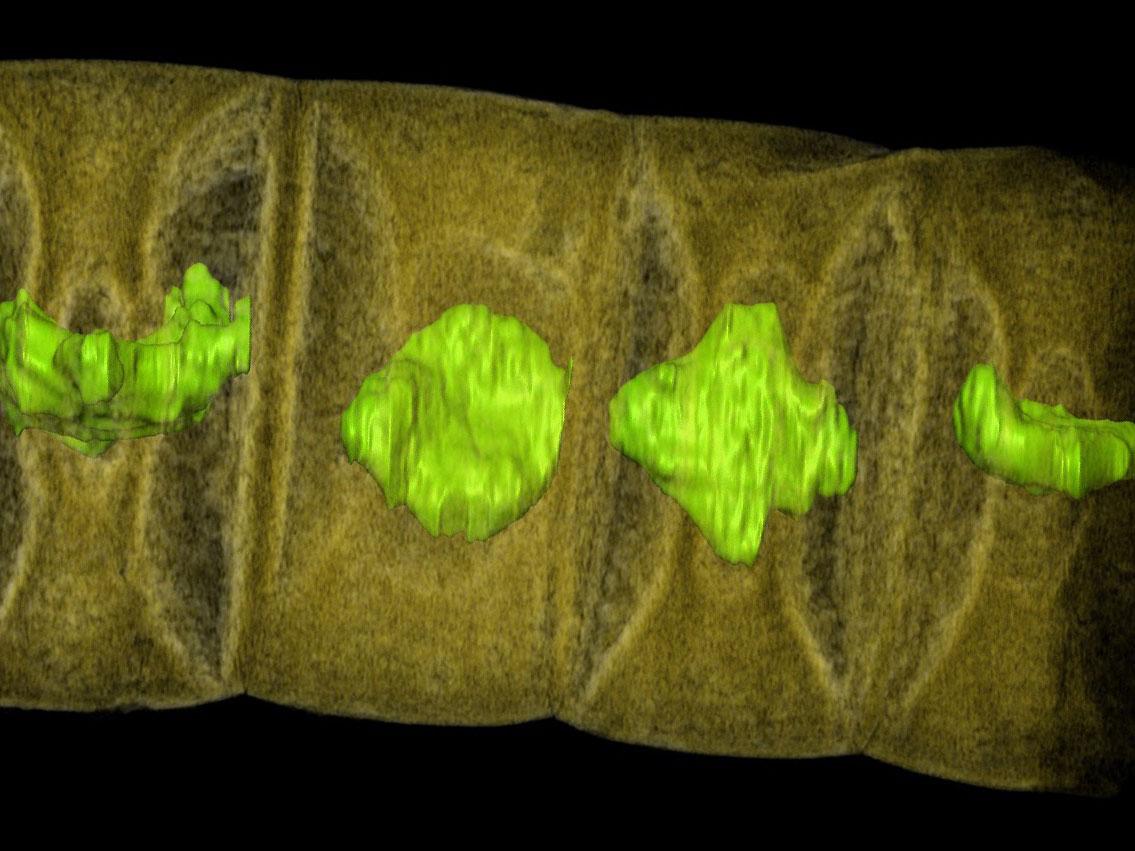World's oldest plant fossil discovered by student pushes evolution of complex life back 400 million years
'I got so excited I had to walk three times around the building before I went to my supervisor to tell him what I had seen,' says Therese Sallstedt

The world’s oldest fossilised plants have been found in rocks in central India, pushing back the first evolution of complex life on Earth by hundreds of millions of years.
It is a finding that suggests the so-called ‘Cambrian Explosion’ of plant and animal life about 600 million years ago may have taken much longer to develop than previously thought.
A student in Sweden made the stunning discovery while examining seemingly innocuous fossilised microbes dating from 1.6 billion years ago taken from rocks in Chitrakoot, central India.
As Therese Sallstedt looked at the samples of primitive, single-cell life through a microscope in her lab in Stockholm, she spotted something rather indistinct that seemed too advanced for the period.
But then, a few slides later, she suddenly found herself staring at a large, fleshy clump of what looked just like complex, multi-cellular red algae.
“I got so excited I had to walk three times around the building before I went to my supervisor to tell him what I had seen,” she said.
Previously the oldest accepted fossil of red algae – or any form of complex or ‘eukaryotic life’ – was from 1.2bn years ago.
But this was one of only a few known examples of complex life and it was thought that little happened before the Cambrian period.
Dr Sallstedt, who has since received her PhD, said the “million-dollar question” now was why complex life evolved but then took about a billion years to really take hold.
“Previously scientists have sometimes referred to this period of Earth’s history as the ‘boring billions’ when things are mostly microscopic and not much happens,” she told The Independent.
“The fossils we found show that complex life was there already by 1.6bn years ago, but the great radiation of animal life-forms still didn’t happen until 600m years ago.
“I guess they just waited for the right conditions. That’s like a big mystery.”
She described the moment of discovery.
“I had seen something similar a little bit before in other thin sections... but the ‘eureka moment’ was when I found this particular specimen when I saw these colonies of algae,” said Dr Sallstedt, of the Swedish Museum of Natural History.
“What I could see was the fossils were really, really big compared to the bacterial fossils surrounding them.
“They were very, very organised in this tissue-like structure in a way you don’t see in the pre-eukaryotic samples.
“That’s when I realised, wow, this must be more advanced than microbes."
Writing in the journal Plos Biology, Dr Sallstedt and colleagues at the museum and the Nordic Centre for Earth Evolution described the fossils as “exquisitely preserved... representing a shallow-water marine environment characterised by photosynthetic biomats”.
“We discovered amidst extensive cyanobacteria mats... organisms that share significant features with modern eukaryotic algae, more specifically red algae,” the researchers wrote.
“These fossils pre-date the previously earliest accepted red algae by about 400m years, suggesting that eukaryotes may have a longer history than commonly assumed.”
Dr Sallstedt’s colleague Stefan Bengtson, professor emeritus of palaeozoology at the musem, said: “The ‘time of visible life’ seems to have begun much earlier than we thought.”
However he cautioned that, while the evidence was strong, there would always be a degree of doubt when assessing such an old fossil.
“You cannot be 100 per cent sure about material this ancient, as there is no DNA remaining, but the characteristics agree quite well with the morphology and structure of red algae,” Professor Bengtson said.
Two different types of algae, called Rafatazmia chitrakootensis, were identified, one that had a thread-like structure and another that formed fleshly colonies.
Fossil discoveries
Show all 7By using specialised X-ray techniques, the scientists were able to make out structures within the cells and ‘cell fountains’, bundles of splaying filaments that are characteristic of red algae.
They also believe that parts of chloroplasts – which enable photosynthesis to take place – can be seen in the fossils.
The earliest forms of life are at least 3.5bn years old, but these single-celled organisms do not have a nucleus, unlike multi-cellular algae and other complex forms of life.
Subscribe to Independent Premium to bookmark this article
Want to bookmark your favourite articles and stories to read or reference later? Start your Independent Premium subscription today.

Join our commenting forum
Join thought-provoking conversations, follow other Independent readers and see their replies